Posts Tagged ‘Joppa’
Dallas City Hall Shows Concern Over Joppa Air Quality – By Putting New Air Monitor 3 Miles From Joppa
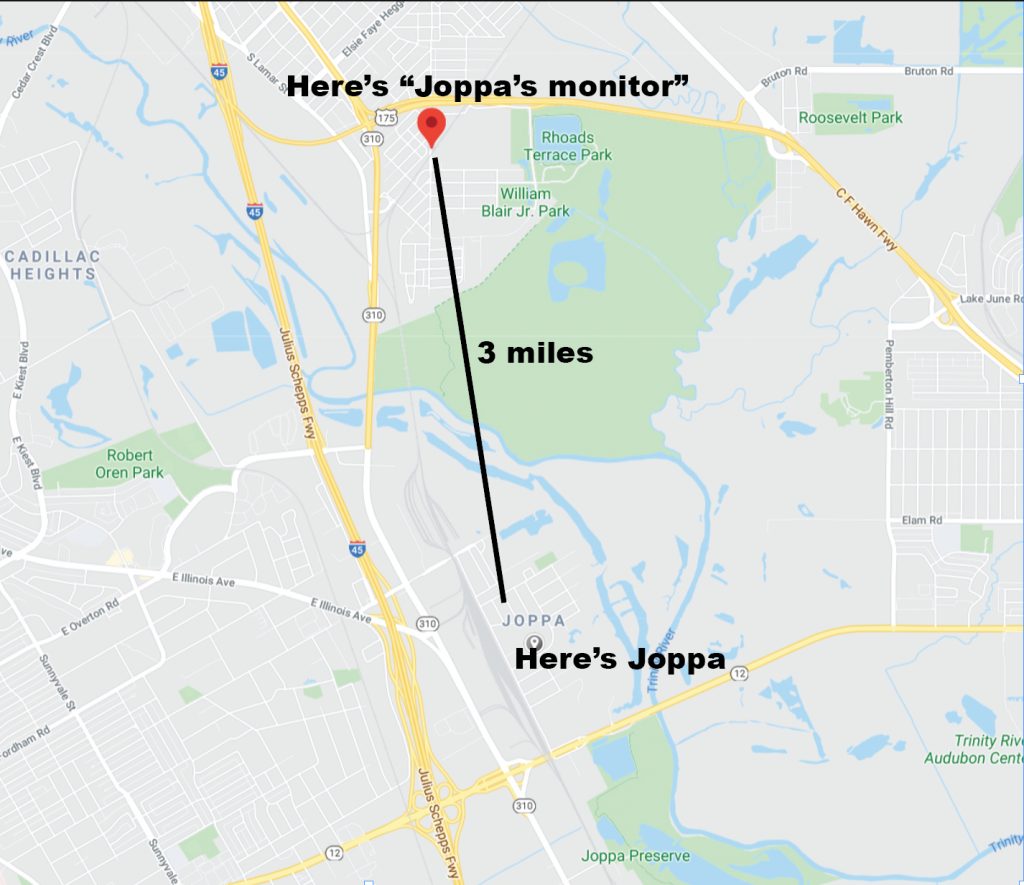
On May 27th Dallas City Hall rejected pleas from Southern Dallas residents and supporters to establish an Environmental Health Commission as part of its new Climate Plan.
On June 1st it provided the best reason yet as to why one is so desperately needed.
Proclaiming that the city had finally come through with a new air monitor for the beleaguered Joppa neighborhood, Office of Environmental Quality staff reported to the Council’s Environmental and Sustainability Committee that the new monitor the residents had fought so hard to get would actually be located…3 miles away on Bexar Street in Bonton.
3 miles away.
Staff rationalized putting “Joppa’s air monitor” (yes, they kept calling it that) in Bonton by promising it would reflect what Particulate Matter air pollution Joppa residents were breathing from the combination of batch plants, locomotives, and a large asphalt shingle factory…3 miles away. Committee Chairman Omar Narvaez went out of his way to make the same point. In fact, he patiently explained to the video audience that you could actually get more accurate readings for Joppa pollution from Bonton, 3 miles away, than you could in Joppa itself!
But not only is none of that true, it directly contradicts everything science knows about how Particulate Matter air pollution is transported and deposited. Donald Trump could not have done a better job of inverting the facts.
Smog is like a blanket. PM pollution is like sparklers. Smog rolls in large slow moving masses of air over many miles. PM is local and unless its coming from a 100 foot smokestack or fire, will not travel en masse 3 miles downwind undiluted. Smog is lighter than air and accumulates. PM is heavier than air and falls to the ground.
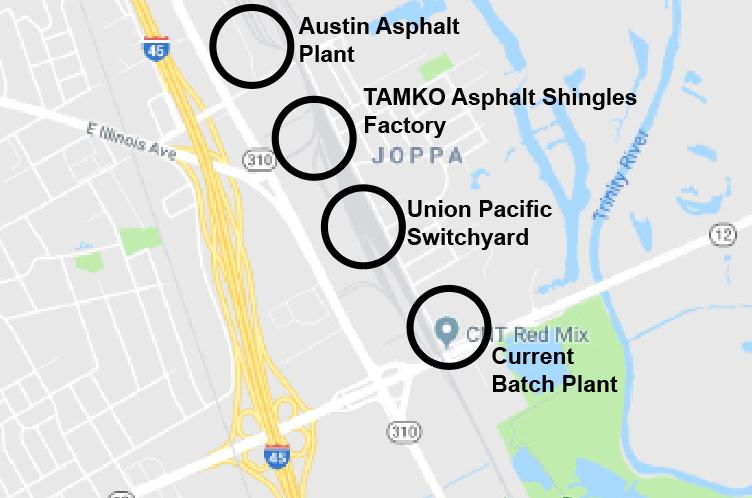
Smokestacks in Joppa are a lot shorter than 100 feet and their pollution is rarely as dense as house fires. PM pollution from these sources will not travel 3 miles downwind without a very heavy wind. It will travel 500 to 2000 feet. A monitor 3 miles away the Joppa pollution sources is incapable of telling you what people are breathing across the street from them. Heck, it’s incapable of even picking up the dust from the Bonton Farm goat herd 2000 feet down the road.
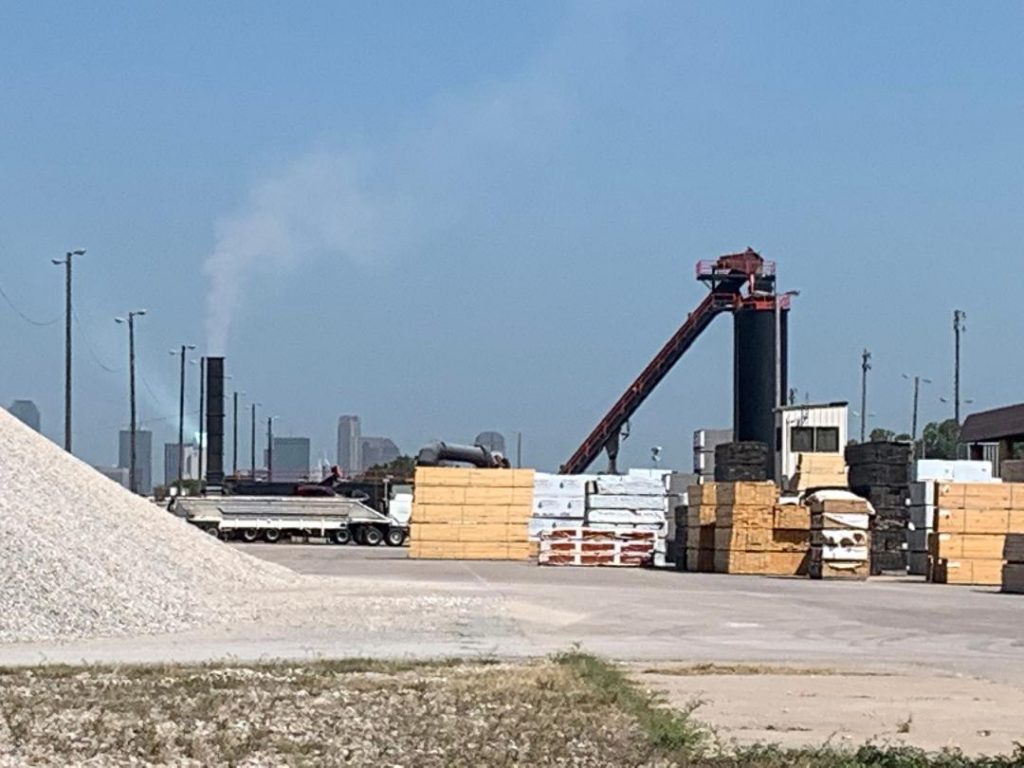
The localized nature of PM pollution – it could be very bad on one end of a street block and fine on the opposite end – is why experts like UTD’s Dr. David Lary are advising local governments to place PM monitors every mile or even half mile from each other in dense networks. Scientists such as Dr. Lary have devoted hours to research showing how PM monitors must be packed close together in order to reveal what people are actually breathing from location to location. A single monitor is incapable of accurately reflecting all the sources of PM pollution in a large area, much less telling you what different neighborhoods next to those sources are breathing.
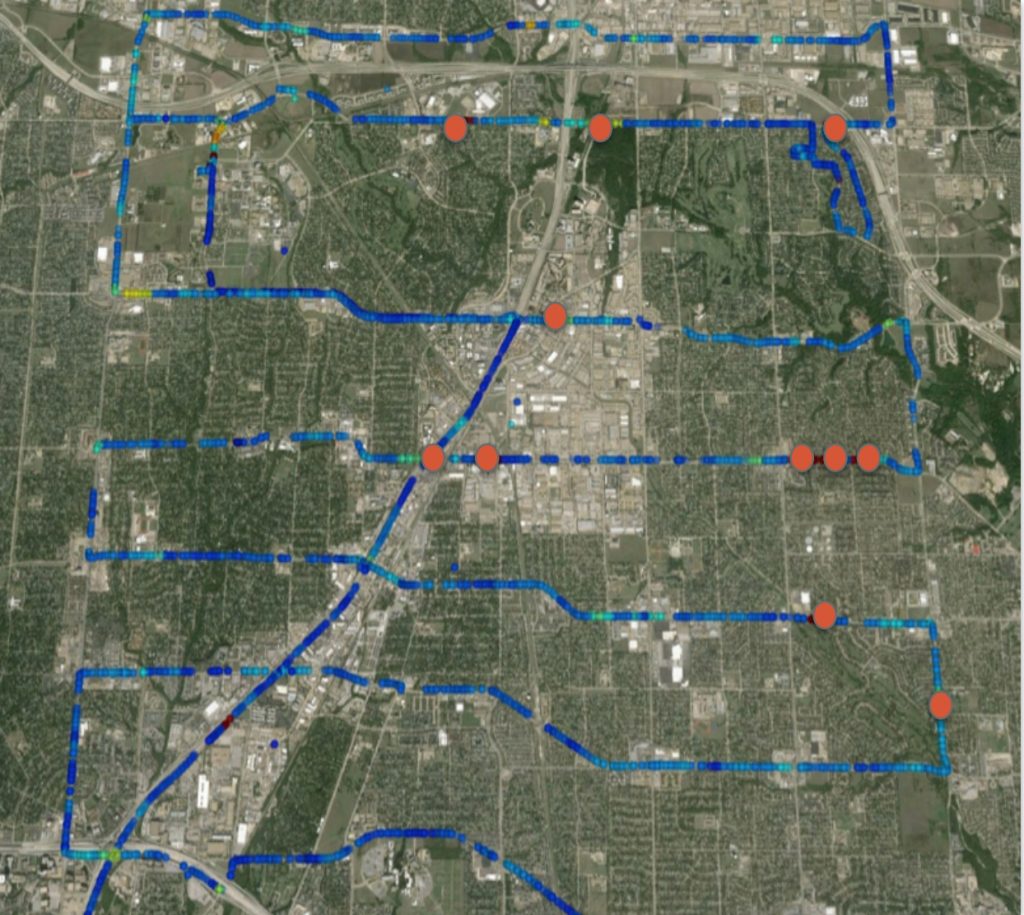
If a Council Member had asked the most preeminent expert on PM air monitoring in DFW, he could have told them all this. But Dr. Lary, who has worked for NASA, was not asked. Nor were any toxicologists, or professional air scientists of any kind.
Staff and Chairman Narvaez’ assertions about the uselessness of next-to-source fenceline monitoring to reveal air hazards will come to a shock to the countless industry and government entities employing it to understand more precisely where air pollution problems are generated. EPA even has guidance for such monitoring, saying “New cost-effective approaches to measuring air pollutants at the fenceline or in communities near industrial facilities can help identify and control air pollution that may drift across property lines.” We could find no EPA guidance recommending monitoring local PM sources from…3 miles away.
Somebody from EPA could have told the council about that that if they’d asked. But they didn’t ask a real air modeler or researcher from EPA, or anyone else that knows what they’re talking about when it comes to air pollution. As a result, council members are endorsing an anti-scientific, backasswards approach to air monitoring guaranteed to make real scientists roll their eyes and sigh. It’d be funny if it didn’t involve real people’s health and well-being.
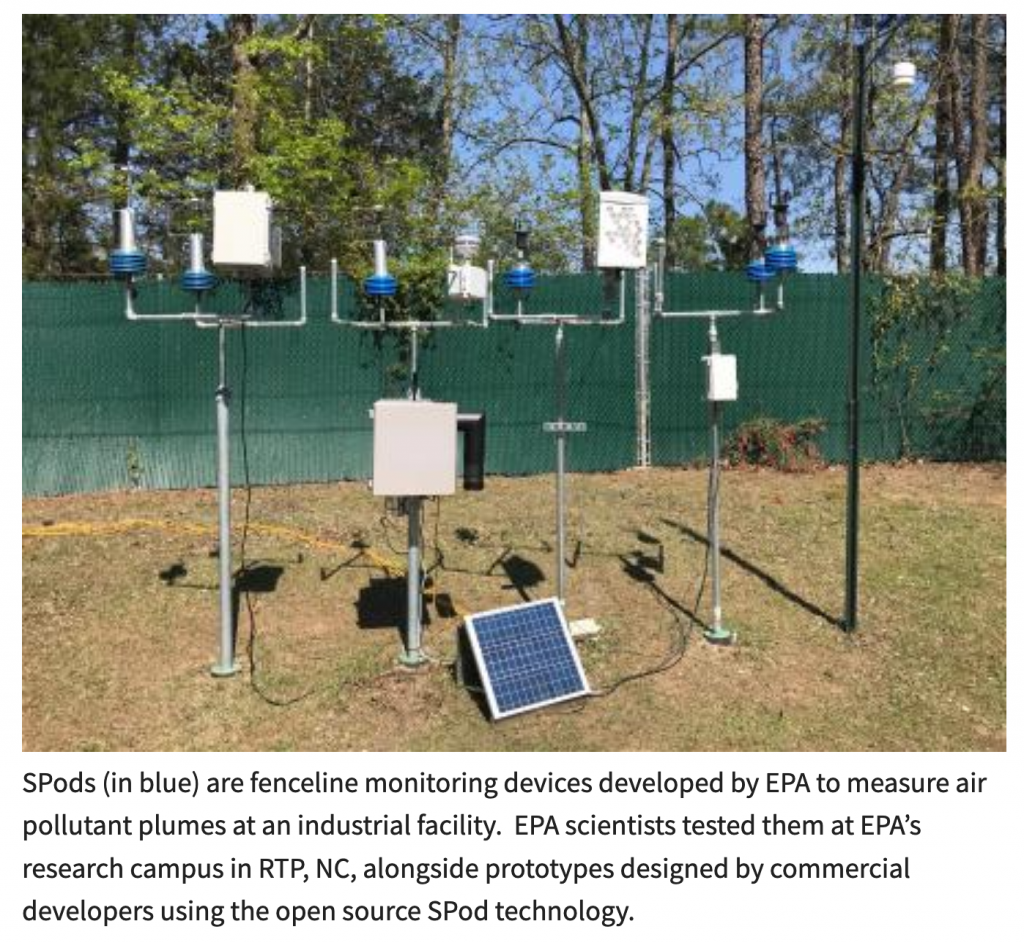
To know what the residents of Joppa are breathing, science says you must monitor the air in their community, not the air 3 miles away from their homes. By putting the monitor adjacent to the Joppa sources, you’re able to capture what pollution is really trespassing into residential neighborhoods and possibly causing problems. You might even be able to hold specific polluters accountable. By putting the monitor 3 miles away, you can’t do that. At that distance, there’s no way to tell what’s producing the PM levels you’re recording with the monitor. Maybe that’s the point.
Because in the briefing and subsequent Q&A with Council, it was clear this wasn’t really a “Joppa monitor” but a combination of “I-20/I-45/ traffic corridor” downwind monitor. “Joppa” is just the cynical Environmental Justice label applied to a monitor that has nothing to do with that community or cause. The new monitor’s placement is a compromise with EPA and the state to monitor PM from highway traffic. But even on this front the monitor isn’t up for the job. I-20 is 6 miles south, while I-45 is a mile upwind and west.
Even the most protective California buffer zones for PM pollution from freeways are a maximum of 1500 feet. That is, based on studies and monitoring, most of the worst pollution from a large highway or freeway is expected to fall out within 1500 feet of the traffic corridor that produced it. So again, the monitor’s official job description is at odds with its own limitations. Taking air measurements 6 miles or even a mile away from a freeway will give you no readings that reflect what its like to live next to it and breathe the pollution it produces.
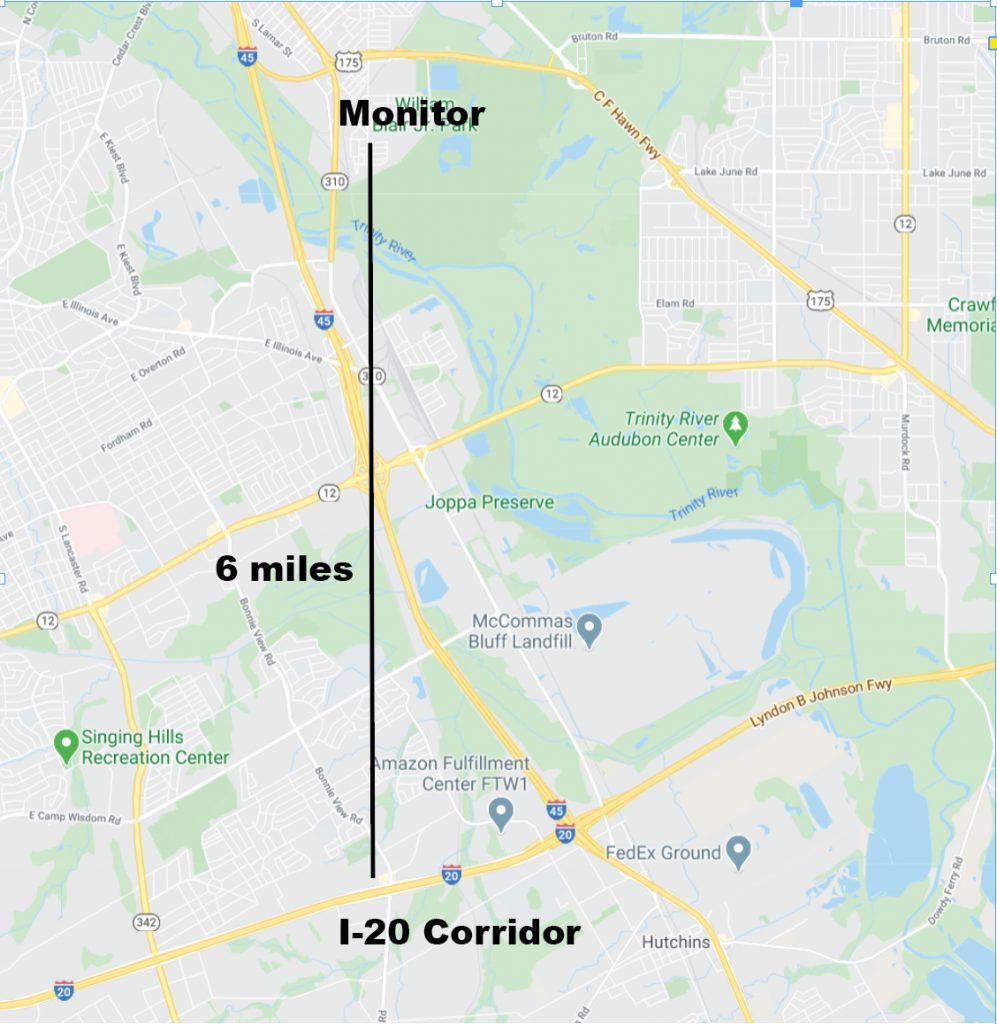
Since there’s no heavy industry in Bonton like there is in Joppa, even if the new monitor records extremely high levels of PM pollution, we’ll have no idea what’s causing it. No one to blame. That may be by design.
Dallas OEQS has a history of not wanting the job of telling people they’re breathing crap. Staff refused residents’ pleas to bring the City’s portable monitors to Joppa in the middle of the Dwaine Caraway batch plant fight three years ago. It’s refused to deploy monitors at Shingle Mountain. Staff walked out of participating in the on-going UTD air monitor network deploying over 100 sensors throughout DFW. Staff has refused to use a dozen brand new air monitors it’s locked up in storage after a failed project with DISD. While other cities race to establish dense 21st century air monitoring networks, Dallas defaults to a single 1990’s-era PM monitor and calls it quits.
This lack of imagination and initiative is the result of having a lawyer, James McQuire, in charge of OEQS instead of a toxicologist. The lawyer’s goal is to meet minimum regulatory standards. The toxicologist’s is to improve public health.
The one overarching air quality goal of this OEQS and the new Climate Plan is to keep Dallas from violating the Clean Air Act. It’s a low bar considering all of the legal “standards for PM show there is no safe level of exposure to the pollutant and people are dying from being poisoned by PM in areas that meet those standards.
One way to meet those standards and insure your goal is by not being too curious about health impacts. You limit the amount of testing and where you test – another page out of the Trump playbook. You don’t go looking to put monitors where air pollution is high, like Joppa or next to a freeway. That’s thinking like a toxicologist and it could put you in violation of the federal standard pretty fast. Instead, you put the monitor where you know the pollution isn’t – like Bonton, 3 miles away from Joppa and 6 miles away from I-20.
So this monitor gives staff the best of all its possible worlds – they get to claim they got a new monitor for Southern Dallas that doesn’t really accomplish much, without it actually being a City of Dallas monitor. If it ever does reveal terrible numbers one day, it will be the state downplaying the results, not City staff. (Lawyer’s) mission accomplished.
And because its a state monitor, don’t expect it to be easy to find online, or give you any real time data. There was no hint by staff of how the data from this monitor would be accessible to the public. Also no timeline for its installation and no air modeling offered to back-up the claim it could capture PM pollution from Joppa sources. All you have is staff’s word. A staff that doesn’t want to find air pollution problems.
What was as discouraging as staff not offering any of these important details was that not one Council Member on the Environmental Committee knew enough about air quality to ask about them as well. Nobody on the City Council knows enough about this topic to make an informed decision or even ask the right questions. And nobody on staff is going to quit misleading them. Meanwhile Environmental Health in Southern Dallas – and everywhere else – is held hostage.
Despite it being a heavily debated topic during last Wednesday’s council meeting there wasn’t even a single question about the City performing air monitoring at the site of the controversial Asthma Cave Soccer Fields under I-345 or the OEQS staff’s opinion about the safety of the concept. It’s just as well. They probably would have endorsed it as a great recreational opportunity for kids.
Video recording of the Monday, June 1st Dallas City Council’s Environmental Quality and Sustainability Committee is available to watch here; the Dallas monitoring presentation begins at 38:20: https://dallastx.swagit.com/play/06012020-522
On Eve of Council Vote, First-Ever Monitoring Finds PM Levels Already Too High in Joppa
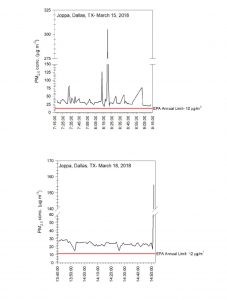 Downwinders PM Committee did the unthinkable this last week and monitored ambient air quality in the tiny Joppa community, where two proposed new concrete batch plants coming up for a Dallas City Council vote on Wednesday want to set-up shop.
Downwinders PM Committee did the unthinkable this last week and monitored ambient air quality in the tiny Joppa community, where two proposed new concrete batch plants coming up for a Dallas City Council vote on Wednesday want to set-up shop.
This was unthinkable because despite months of controversy over the siting of yet more concrete batch plants in a predominantly-minority neighborhood already jammed with heavy industry nobody had thought of doing it before our team of SWAT Citizen Scientists showed-up.
Not the batch plant operators seeking approval of their permit requests.
Not the staff of the City of Dallas, who are recommending approval of those requests.
No…it was our all-volunteer “Soot Sisters” armed with their newly acquired fully-calibrated portable PM monitors who had the audacity to actually see what levels of pollution Joppa residents were breathing now – before the addition of any new sources of bad air.
After we got our results, we kind of understand why air monitoring was unthinkable to those other folks: because the air in Joppa is often unbreathable.
Since our monitors arrived late to the scene in Joppa, we’ve only been able to get snapshots of air quality before the scheduled council vote in the 28th. Two hours on this day, another two on that day. The sample is very small, but it’s also very disturbing.
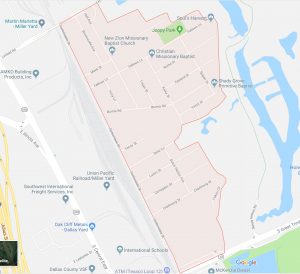
Joppa is already surrounded on three sides by heavy industry
First, they found significantly higher levels of ambient PM pollution in Joppa than was recorded by the only official EPA PM monitor in Dallas, located near Stemmons Freeway during the same time period, and higher than the levels the Committee found at various DART bus stops and routes they’ve also been monitoring as part of the new Green Streets bus electrification campaign
Levels in Joppa were as much as 30 to 50 % higher than the EPA monitor – even on a Sunday. Residents there are already breathing more PM pollution than residents in other parts of the city.
Secondly, if the Committee’s results were extrapolated over the course of a full year, these daily levels would add up to a violation of the EPA’s annual PM pollution standard. That is, if our findings are indicative of daily exposure, Joppa could already be exceeding the EPA standard and any additional PM pollution would only make matters worse.
You can read the entire short report on Joppa, Round one, prepared by Dr. Tate Barrett, our PM Science Director here: Joppa Report #1

Shannon Gribble and Cresanda Allen on a monitoring run in Joppa
Because there’s been no monitoring in Joppa until now, it’s possible the area has been in routine “non-attainment”of the EPA PM standard. It takes three years of annual averages above the standard, recorded at an officially designated EPA monitor, to classify an area as non-attainment and qualify for new federal new controls. However, Dallas’ only official EPA PM monitor is nine miles north of Joppa near Stemmons Freeway and Mockingbird.
Study after study has shown how People of Color generally, and African-Americans specifically, are disproportionately exposed to, and harmed by, PM pollution. While Dallas’ one and only EPA-designated PM monitor could be accurately recording PM levels north of the Trinity River, it’s not reflecting the reality of residents in Joppa, West Dallas, Cadillac Heights, or Cedar Crest.
There’s been a lot of discussion recently concerning inequity of resources in Dallas. It’s not news that this inequity extends even to the very air residents breathe and how the current regulatory system ignores those differences. But our Joppa monitoring casts a new spotlight on that fact. No equal protection is possible unless you have equal access to official monitors which determine enforcement of the laws.
That’s why when we turned our first results over to District 7 Council Member Kevin Felder on Friday, we recommended the City either consider moving Dallas’s sole EPA-designated PM monitor to Joppa, or pay for a second EPA-designated PM monitor to be located in Joppa, to begin recording data as soon as possible to determine if the area is indeed violating the EPA PM standard year-round.
These Joppa results also become another compelling example of why DFW needs its own local air quality monitoring network. It’s ridiculous that there’s only one PM monitor for all of Dallas County’s 2. 5 million residents stretched out over 900 square miles. PM levels as low as 5 ppb
Downwinders has joined with local universities and governments in pursuing the establishment of a local air quality monitoring network that could place inexpensive year-round PM monitors throughout Dallas and North Texas with real time information accessible to the public by a simple phone app. Dallas County Commissioner Theresa Daniels is expected to sponsor a resolution for the creation of such a network at the Commissioners Court in the coming weeks.
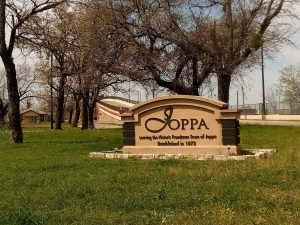 Dallas should follow. The City’s Office of Environmental Quality approves or disapproves of zoning changes like the ones being sought by the batch plants in Joppa without knowing what environmental burdens residents are already carrying. Even though they have the ability and capacity to do real time monitoring of neighborhoods where new industry wants to expand or locate, the OEQ never does. Nor does it have a single toxicologist or public health expert on its staff who’d want to see that kind of information before passing judgement on a zoning request. Instead it’s headed up by a lawyer and is mostly concerned about not making any definitive statements about local environmental health problems or environmental justice issues at all. With all the house-cleaning at Dallas City Hall since a new city manager took control, the OEQ now looks to be one of the last repositories for Business As Usual thinking. That must change.
Dallas should follow. The City’s Office of Environmental Quality approves or disapproves of zoning changes like the ones being sought by the batch plants in Joppa without knowing what environmental burdens residents are already carrying. Even though they have the ability and capacity to do real time monitoring of neighborhoods where new industry wants to expand or locate, the OEQ never does. Nor does it have a single toxicologist or public health expert on its staff who’d want to see that kind of information before passing judgement on a zoning request. Instead it’s headed up by a lawyer and is mostly concerned about not making any definitive statements about local environmental health problems or environmental justice issues at all. With all the house-cleaning at Dallas City Hall since a new city manager took control, the OEQ now looks to be one of the last repositories for Business As Usual thinking. That must change.
Downwinders PM Committee was back out in Joppa this last weekend for more rounds of air monitoring. Those results will be dowloaded and analyzed by Dr. Barrett and presented to the City Council on Wednesday by PM Committee member Misti O’Quinn. Stay tuned.
